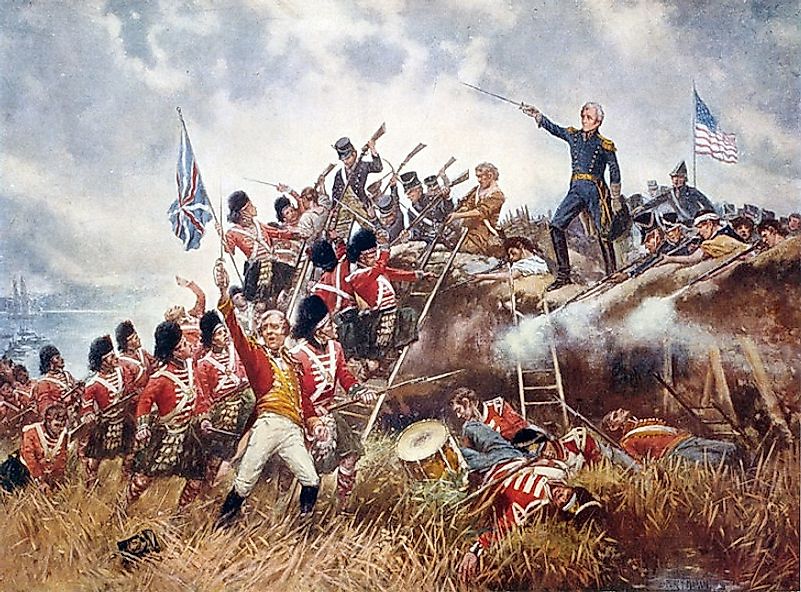Battle Of New Orleans - War of 1812

5. Background
Being the last battle of the War of 1812, the Battle of New Orleans has remained in the memory of Americans as the decisive battle in the subsequent ratifying of the Peace Treaty of Ghent, ending hostilities between the U.S. and Great Britain. The war had been fought from 1812 through 1815. It took place in many different locations across the country, including the American-Canadian border, the Atlantic Ocean, and the Gulf of Mexico. This battle was part of the conflict which once again placed America and the British on opposing sides of the battlefield. It happened due to a number of issues, including fighting for disputed territories, the British apprehension of American sailors and using them for their purposes, through impressment, as well as the discontent of Native Americans, who joined efforts to fight against the domestic U.S. government in alliance with the British military.
4. MAKEUP OF THE FORCES
The sides of the battle included, on one hand, the U.S. Army and, on the other, the British Army and the Native American raids that supported their purposes. General Andrew Jackson ultimately commanded the U.S. troops, while the lead British general was Edward Pakenham. The British army force in the battle was composed by 11,000 men, while the Americans had only 4,000 men in the units on hand. It's interesting to note that the U.S. Army was large made up of inexperienced fighters, which included otherwise rogue pirates as well as ‘Freedmen’ (non-slave African-Americans) riflemen from Kentucky and Tennessee. Contrary to the U.S. Army, the British army fielded very experienced troops, with their forces also including British Navy sailors and Royal Marines.
3. DESCRIPTION OF THE BATTLE
Both sides used essentially the same weapons. The British had either a .75-caliber East India Pattern or Brown Bess musket. This weapon could be effective only at ranges of 100 yards or less. Nonetheless, it could be reloaded and fired relatively quickly for a gun from that time period. The British also carried long bayonets on the ends of the guns in their arsenal. Americans used either the .69-caliber 1795 Springfield musket or Kentucky rifles. In general, the Americans’ weapons were more crude in this aspect, and many ended up more effectively attacking with their knives. General Jackson's main tactic was to hide in barriers they had made, and shoot from the relative safety these afforded. The British, who were more confident in their ways and means, simply marched forward, hoping to kill U.S. soldiers through size of force and superior technology. The British underestimated the rugged terrain itself, which was adapted by the American Army, and was decisive in the final outcomes of the battle.
2. OUTCOMES
The Battle of New Orleans ended up with America as the victorious side. The victory was extremely unexpected, due to the Americans being outnumbered by a ratio higher than 2:1. Indeed, some people of the day even talked about the victory being a miracle. General Jackson himself actually thanked some nuns who prayed the day before for the intercession of Virgin Mary in favor of the American troops. The military reason for America winning the battle, however, was more likely the genius of Andrew Jackson. He came up with a tactic that allowed the destruction of opposing British forces by using artillery from a single, strategically advantageous location. From the American side, there were 55 people killed, and 185 injured. From the British side, 386 were killed, 1,400 were wounded, and 500 were captured.
1. Historical Significance and Legacy
As the last battle of the War of 1812, the Battle of New Orleans allowed for a peace agreement, the Treaty of Ghent signed on Christmas Eve, 1814, to be ratified by the U.S. Congress in February of 1815. With it, the U.S. claimed Louisiana Territory and West Florida as their own, undisputed territories, and the path was paved for peaceful trade and diplomacy with Great Britain. The United States essentially gained control over the Mississippi River, and thus the U.S. moved to expand further to the West, increasing its land, wealth, and autonomy as its ‘manifest destiny’. The Battle of New Orleans would make Andrew Jackson a household name, and help solidify his bid for the presidency in the years to come. The battle was increasingly immortalized in the pop culture sphere almost a century-and- a-half later, with the release of the Jimmy Horton hit single, "The Battle of New Orleans". It would reach number 1 on the Billboard Hot 100 Charts in 1959, in addition to earning Grammy Awards. Many other songs, books, and films would go on to commemorate the American victory as well.











